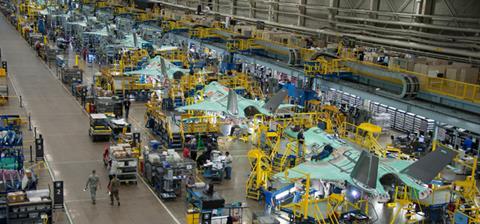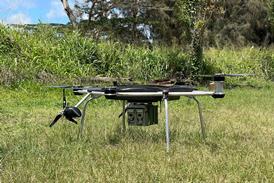Lockheed Martin has secured a nearly $7.8 billion contract with the US Department of Defense (DoD) to produce 126 new F-35 Lightning II stealth fighters for the USA and allies.
The Pentagon announced the deal on 28 April. It includes aircraft for the US Air Force (USAF), US Navy (USN), US Marine Corps (USMC), Finland, Italy, the Netherlands, Poland, Japan, Belgium, Denmark and the UK.

All three F-35 variants are covered under the order, including the conventional F-35A, and short take-off and vertical landing F-35B and carrier-capable F-35C.
The contract, which is designated as Lot 17 of F-35 production, represents the final instalment of a 2022 agreement between the DoD and Lockheed for 398 of the fifth-generation fighters. Lot 15 covered 145 airframes, while Lot 16 included 127.
“This contract strikes the right balance between what’s best for the US taxpayers, military services, allies and our foreign military sales customers,” said USAF General Mike Schmidt in December when the deal for 398 aircraft was announced.
Schmidt oversees the Pentagon office managing F-35 procurement for the three US military services and overseas allies.
When it reached the December agreement with the Pentagon for production on Lots 15, 16 and 17, Lockheed said those aircraft would be the first to have upgraded onboard hardware and new flight software, known as Technical Refresh-3 (TR-3), needed to power the latest Block 4 model of the F-35.
Those upgrades include a new integrated core processor with greater computing power, a panoramic cockpit display and an enhanced memory unit.
On 18 April, Lockheed chief executive Jim Taiclet said TR-3 is still in flight testing, but described the process of rolling out the improvements as being in the “very late innings”.
“There have been some delays in some of the hardware and software, but we’re really in the very late innings of getting this all together,” Taiclet said. “We’re literally flight testing right now.”
Schmidt in December described the improvements as further enhancing the “unsurpassed” capability of the F-35.
“The modernised Block 4 capabilities these new aircraft will bring to bear strengthens not just capability, but interoperability with our allies and partners across land, sea, air and cyber domains,” he said.
According to the Pentagon, the improvements will enable new sensor suites, more long-range precision weapons, improved electronic warfare features and more powerful data fusion.
“These capabilities provide the war fighter a combat edge to identify, track, engage, and survive against advanced air, ground and cyber threats,” the Pentagon’s F-35 Joint Program Office says.



















